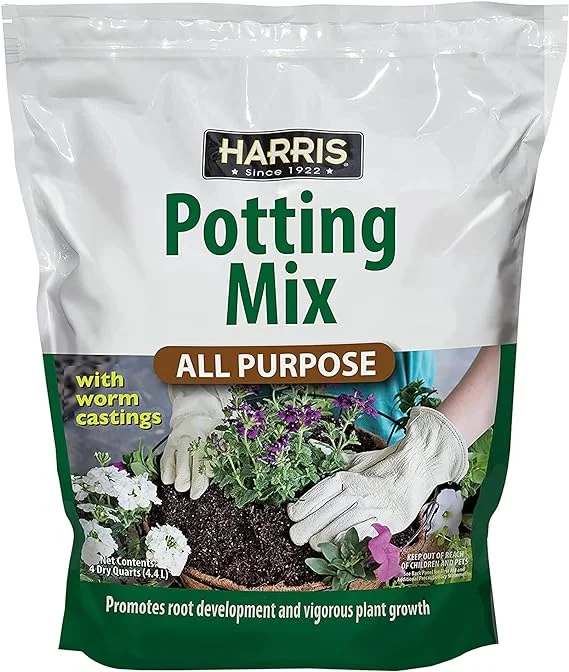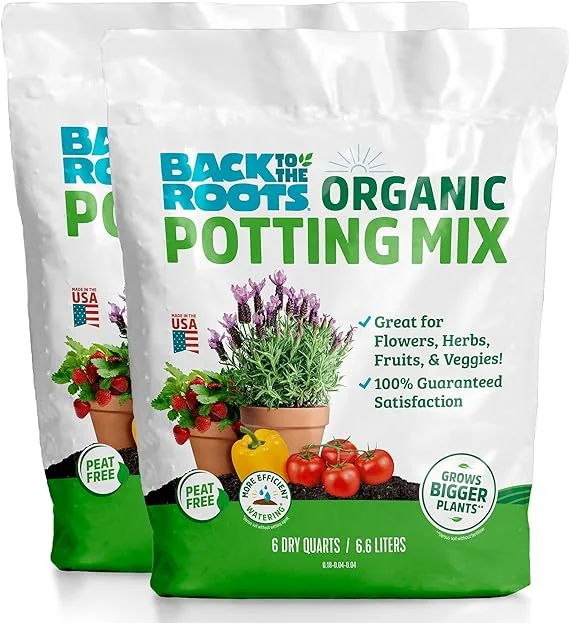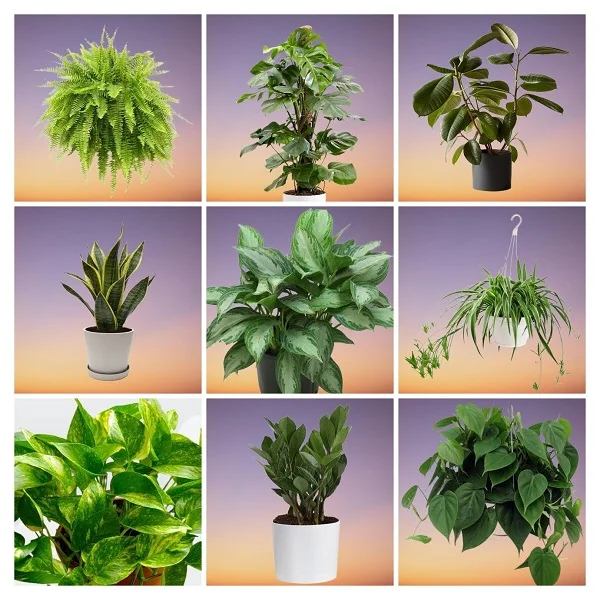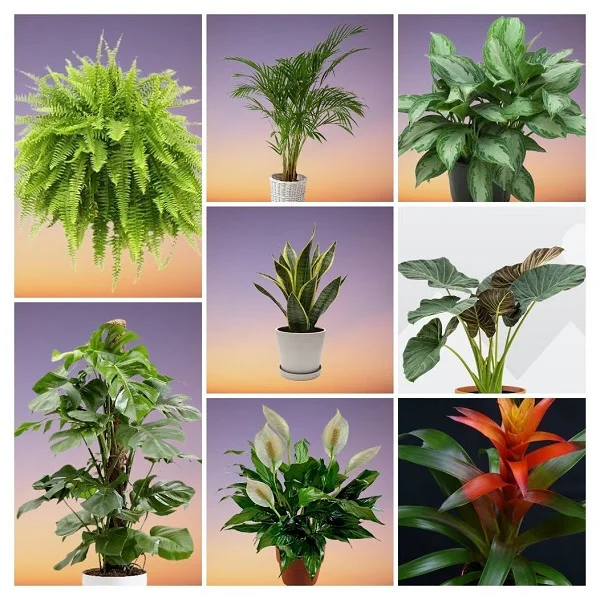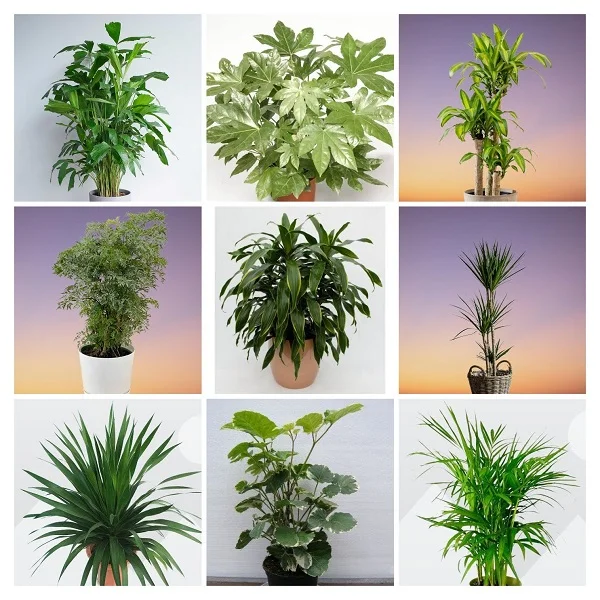Bamboo Palm (Chamaedorea erumpens) Indoor Care; Light, Water, Temperature, Humidity, Soil, Repotting
Some links in this post may be affiliate links
Bamboo Palm (Chamaoderea erumpens) grows best in bright indirect light, average warmth and humidity and moderately moist, rich, well-drained soil coupled with monthly feeding in the growing season.
Chamaedorea erumpens is one of the popular palms on account of its beauty, ease of care and air-cleaning properties.
The yellowish bamboo-like canes and beautiful, deep-green, broad leaflets make Bamboo Palm stand out as a focal point plant in any space making it one of the best plants for the home, office and other suitable places.
Bamboo Palm belongs to a group of palms called cane palms which produce tall reed-like stems which look like bamboo-like canes when mature.
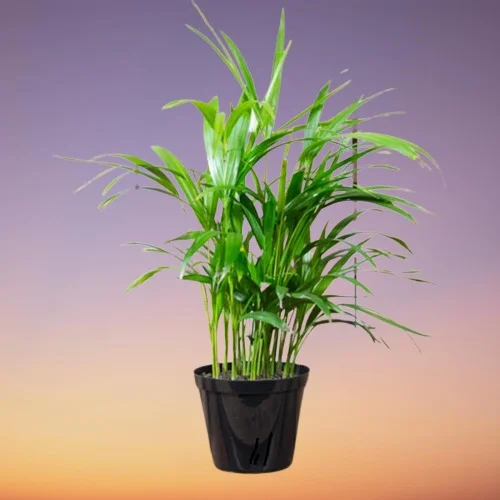
Botanical name: Chamaedorea erumpens
Family: Arecaceae
Sufamily: Arecoideae
Common name: Bamboo Palm
Origin
Chamaedorea erumpens is native to the tropical forests of Central and Northeastern Mexico as an understory plant.
Size
Chamaedorea erumpens can grow to a height of 6-10 feet under good conditions but it grows slowly and may take a few years to reach the average height of 6 feet placing it among the best tree-like plants for indoors.
Flower
Bamboo Palm also produces flowers followed by bright-orange fruits once grown and mature apart from being attractive. The fruits contain oxalic acid which can irritate skin; wear gloves when handling and are also toxic to humans and pets.
Air Purifying
According to the NASA Clean Air Study, Chamaedorea erumpens was found to be among the best air-cleaning plants and gets rid of xylene, toulene, benzene, formaldehyde and trichloethylene.
Toxicity
The foliage of Chamaoderea erumpens is non-toxic to both humans and pets. However, the fruits (berries) are highly poisonous to both humans and pets. It is important to prevent flowering by removing the flower stalks when they begin to form. The fruits contain oxalic acid which can irritate sensitive skin; always wear gloves when handling the berries.
Related Plants
Chamaedorea erumpens is related to Chamaedorea elegans (Parlour Palm) and Chamaedorea seifrizii (Reed Palm).
Where to Buy
Bamboo Palms are great addition for your collection for a tropical feel in your home. You may acquire these palms from (Link to Etsy).
Chamaoderea erumpens Care Indoors
To care for Chamaoderea erumpens indoors provide bright indirect light (filtered light), average warmth of 15-260C, humidity of 50-55% and moderately moist, rich, well-drained soil coupled with monthly feeding during the growing season.
Chamaoderea erumpens repotting is done at the beginning of the growing season only when the palm has become pot-bound. Pruning is needed to keep the palm neat as well as reduce pests and diseases. Keep reading for more on these growing conditions and how to achieve them.
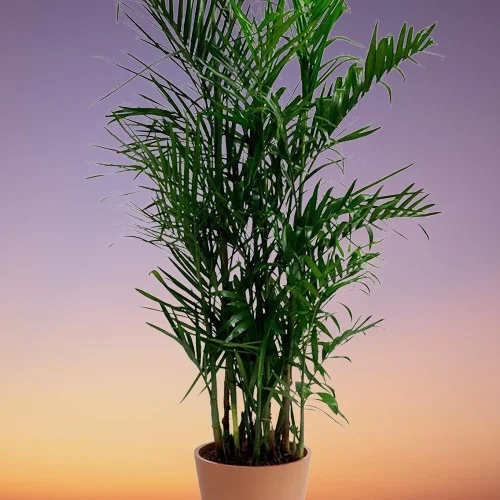
Watering
Water your Chamaoderea erumpens thoroughly in spring and summer and allow the top 2-3 inches of soil to dry out between waterings. Keep the soil moderately moist and avoid soggy soil to prevent yellowing and rotting.
Cut down on watering in fall and winter to maintain the soil slightly moist as growth is reduced at this time. Do not allow the soil to dry out completely to avoid drooping leaves.
Use chlorine-free water like rain water and filtered water. Bamboo Palm is sensitive to chlorine and other chemicals dissolved in water which can cause browning.
Avoid getting the base wet to prevent rotting. Do not allow the palm to sit in soggy soil as it may lead to root-rot and eventual death of the palm.
Light Requirements
Chamaoderea erumpens thrives in bright indirect light (dappled light). Keep it away from direct sunlight as it can cause scorching and yellowish color instead of the beautiful dark-green color.
Too litle light can result in slow growth. You may grow the palm under grow lights where the natural lighting is not sufficient.
Turn the pot regularly to ensure the plant receives light on all sides for uniform growth and prevent lopsided growth.
Temperature and Humidity
Chamaoderea erumpens prefers an average warmth of 15-260C with a minimum of 120C. Keep it away from drafts like windy doors, drafty windows, AC units, heat sources to avoid sudden temperature changes which can cause reduced growth and brown leaf tips and spots.
Bamboo Palm has no need for extra humidity, moderate humidity of 50-55% is enough for this palm. However, too dry air can result in brown leaf tips. Use a humidifier or a wet pebble tray to increase humidity. You may also group the plants together to create a humid microclimate.
Fertilizer
Feed your Chamaoderea erumpens with a balanced, liquid fertilizer monthly during the growing period (sring and summer) to promote a lush growth.
Do not feed in the cold season (fall and winter) as growth is minimal at this time and feeding at this time as it can lead to fertilizer burn and eventual death of the palm.
To get rid of any accumulated chemicals from the soil, run a stream of water through the soil until it comes out through the drainage holes. Let it run for a few minutes and repeat the process several times.
Potting Soil
The best potting soil for Chamaoderea erumpens is a well-draining, rich soil which retains moisture but drain well to prevent root rot. A mix of 60% peat-based potting mix for moisture retention, 30% perlite or sand for drainage, and 10% organic compost for nutrients is ideal for this palm.
Repotting
Repot Chamaoderea erumpens every 2-3 years at the beginning of the growing season (spring); repot only when the palm is root-bound as it does not like root disturbance.
Use a pot 1-2 sizes larger than the current one that has a drainage hole to prevent the soil from getting soggy to avoid root-rot. Check out these pots with drainage hole on Amazon.
Pruning & Maintenance
Pruning Chamaoderea erumpens is easy.
- Cut away the old brown and dry fronds near the soil surface to maintain the palm neat and also reduce pest and disease infestations.
- Where the seeds are required for propagation, allow the fruits to mature and drop then cut away the spent flower stalk.
- If the seeds are not required, cut away the flower stalk immediately to prevent the palm from wasting energy on developing the flowers and seeds.
Occasionally clean the mature leaves by damp-wiping with a soft cloth to get rid of dust and discourage pests infestation.
Chamaoderea erumpens Propagation
Chamaoderea erumpens (Bamboo Palm) propagation is done during the growing season when the plant is actively growing by plant division, from offshoots, or by seed germination.
Propagating Chamaoderea erumpens by plant division
During repotting, divide the palm into sections and pot the sections in individual pots.
Place the set up in a warm, well-lit place away from direct sunlight.
Mintain the soil moist until new growth emerges.
Allow the new palm to be well established before transplanting into a pot one size larger after which you can begin routine care.
Propagating Chamaoderea erumpens from offshoots
Chamaoderea erumpens is clumping palm which produces offshoots at the base which can be used to propagate new plants.
Carefully cut the offshoot from the mother palm. Ensure that the offshoot has adequate roots before seperating it from the mother.
Pot the offshoot in its own pot, place in a warm, well-lit place away from direct sunlight.
Maintain the soil moist through out until the plant is well established.
Once the new palm is well established, transplant into a pot one size larger than the current one after which you can begin routine care.
Propagating Chamaoderea erumpens from seeds
Chamaoderea erumpens propagation from seeds is difficult and may take up to 4-6 months.
Sow the seeds in moist soil and place the set up in a brightly-lit, warm place, at about 25-300C.
Maintain the soil moist through out the period until germination takes place.
Lower the temperature slightly after germination and maintain the soil moist until the new palms are well established.
Related Content: How to propagate Reed Palm (Chamaedorea seifrizii).
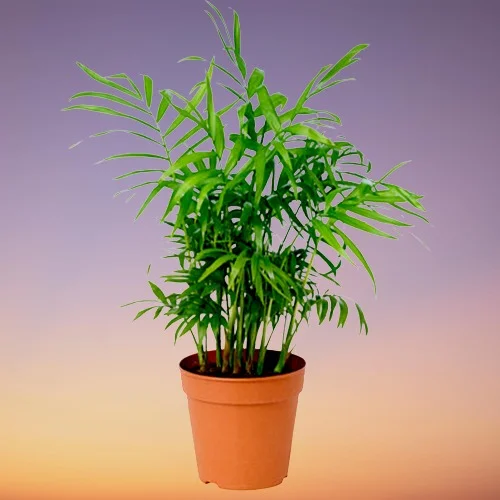
Chamaoderea erumpens Common Problems
Chamaoderea erumpens problems are brown leaf tips, yellow leaves, brown leaves, brown leaf spots, pests, and diseases among others. Keep reading for more on these problems and how to solve them.
Brown leaf tips
Brown leaf tips on Chamaoderea erumpens are caused by dry air, underwatering, drafts, and bruising.
How to fix it
Trim off the brown tips with sterilized scissors to keep the palm neat and tidy.
Dry air: Set the pot on a wet pebble tray or use a cool mist humidifier to raise humidity.
Underwatering: Water when the top 2-3 inches of soil dry out but do not allow the soil to dry out completely.
Drafts: Keep the palm away from drafts coming from windy doors, air conditioning units, heat vents, stoves to maintain an average warmth of 15-260C.
Bruising: Keep the palm away from the line of traffic.
Yellow leaves
The main causes of yellow leaves on Chamaoderea erumpens are underwatering, overwatering, soggy soil, too little light and direct sunlight.
How to fix it
Underwatering: Water when the top 2-3 inches of soil dry out but do not allow the soil to dry out completely.
Overwatering: Do not water on a schedule. Water only when the top 2-3 inches of soil feel dry.
Soggy soil: Use a pot with a drainage hole and well-draining soil.
Too little light: Move the plant to a brighter spot or use a grow light if the natural light is not enough.
Direct sunlight: Position the plant in a shaded place or instal a sheer curtain to filter the sunshine.
Brown leaves
Some of the causes of brown leaves on Chamaoderea erumpens are inconsistent watering, temperature stress, direct sunlight, and aging.
How to fix it
Remove brown leaves by cutting at the base with a sharp, sterilized knife or scissors to minimize injuries.
Inconsistent water: Water when the top 2-3 inches of soil dry. Never allow the soil to dry out completely.
Temperatute stress: Protect the plant from drafts emanating from AC units, heat sources, windy doors and others.
Direct sunlight: Keep the palm away from direct sunlight or use a light curtain to filter the light.
Aging: This is a natural process. As the palm matures the lower leaves turn brown and begin to die.
Brown leaf spots
Brown leaf spots on Chamaoderea erumpens are due to overwatering and temperature flactuations.
How to fix it
Cut away the affected parts and discard.
Underwatering: Maintain the soil moderately moist in spring and summer and slightly moist in fall and winter. Do not allow the soil to dry out completely.
Temperature flactuations: Protect or keep the palm away from drafts to maintain a warmth of 15-260C with a minimum of 120C.
Pests
Common pests on Chamaoderea erumpens are mealybugs, spider mites and scale insects.
How to fix it
- Isolate the affected palm to prevent spread to the other plants.
- Treat the infested plant with neem oil or insecticidal soap as per the manufacturers recommendations.
- Regularly check underneath the leaves for these pests and carry out timely control measures.
- Keep the palm properly pruned to discourage their infestation.
Diseases
Chamaoderea erumpens is prone to root-rot disease which is prevalent in soggy soil. It is characterized by yellowing and wilting of the leaves which is rapidly followed by browning and plant collapse.
How to fix it
- Carefully remove the plant from its pot and inspect the roots.
- Trim the brown-black, mushy roots and treat the healthy roots with a copper-based fungicidal solution as indicated on the label.
- Disinfect the pot with the fungicidal solution or use a fresh pot to repot the plant in fresh, well-draining soil.
- Do not water the plant immediately and keep it dry for 5-7 days before you can resume watering.
- Use a pot with a drainage hole and well-draining soil at all times to prevent the soil from becoming soggy.
- Decrease watering in fall and winter as growth is slowed at this time; keep the soil slightly moist.
Related Content: Bamboo Palm Common Problems Indoors and How to Fix Them
Conclusion
Caring for Chamaedorea erumpens indoors is easy with the right light, water, humidity, and maintenance. This low-maintenance plant not only enhances your home decor but also improves air quality. With proper care, your palm will thrive and bring tropical beauty to your space for years to come.
You liked it? Share on social media.
Related Content
Amazon Associates Disclosure
Homeplantsguide.com is a participant in the Amazon Services LLC Associates Program, an affiliate advertising program designed to provide a means for sites to earn advertising fees by advertising and linking to amazon.com.
